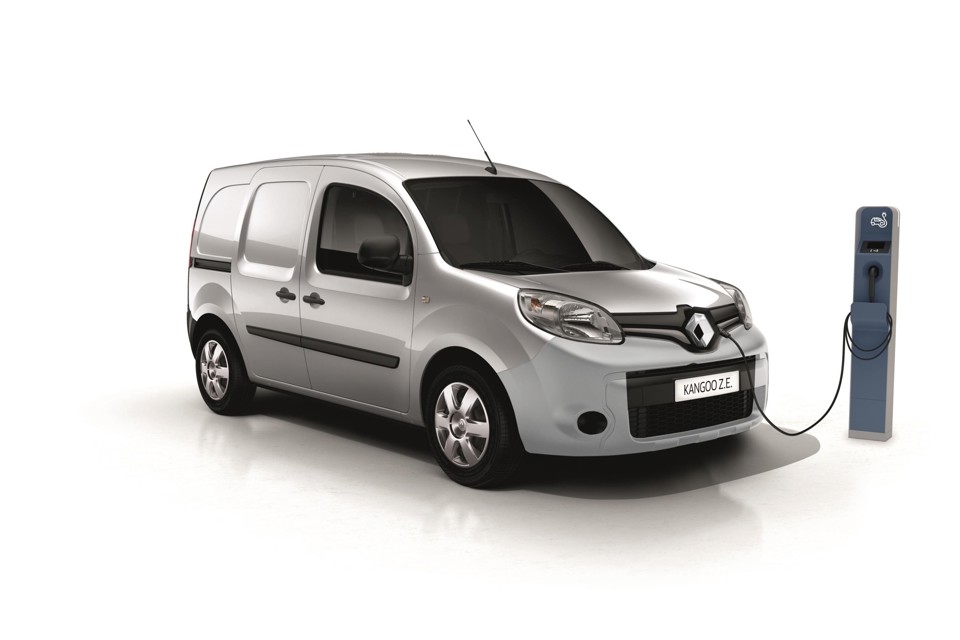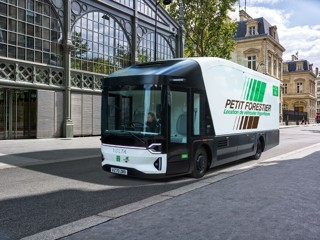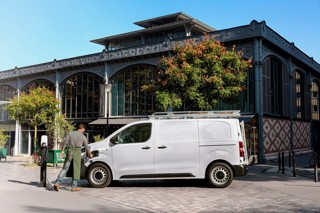Operators are being told they have ‘no time to lose’ to electrify their van fleets, after a ban on the sale of new diesel and petrol light commercial vehicles (LCVs) was brought forward to 2030.
Hybrid vans, which the Government has yet to define but says should be able to travel a “significant distance” with no carbon coming out of the tailpipe, will be banned from 2035.
Paul Kirby, head of LCV and EV strategy at Vanarama, said: “The reality is you need to get started now because, with the ban on diesel and petrol vans from 2030, that could be just two replacement cycles away.”
While many fleets are just getting to grips with the idea of giving their drivers electric company cars, the transition to electric vans is not so straightforward as they need to consider the limited ranges and charging requirements of the vehicles more carefully.
Royal Mail operates the largest fleet in the UK and has an ambition to reduce its carbon footprint as much as possible, yet to-date it only has 295 electric vans on its fleet.
As demand for parcel deliveries booms, it faces a need to increase not only the size of its fleet, but also the size of its vans. It means there is little space at its depots for EV charging points and little opportunity for downtime.
Infrastructure problems
Speaking at Logistics UK’s Future Van Conference, Anna Pearson, fleet innovation and environment manager at Royal Mail, said: “We are challenged with ageing infrastructure and limited space. Not all our buildings are owned so we need landlord permission before we can invest in upgrading our sites.”
However, the business is committed to electrifying its fleet and is currently trialling a number of different vehicles, including the Arrival 6.5-tonne electric truck.
“It’s important we choose the right vehicle, the right fuel type and the right location. It’s definitely not a one-size-fits-all scenario,” she added.
Hackney Borough Council has been operating EVs for 20 years, yet fleet manager Norman Harding still has a number of reservations.
“The vehicles are great but, in my experience, the charging infrastructure has not been as good. I think the general charging industry has got a long way to go before it gets to where it needs to be,” he said.
When it comes to wholelife costs, Harding confirmed that electric vans are cheaper, despite their upfront purchase prices being higher. The issue comes when fleets try to establish their own charging infrastructure.
“To install charging infrastructure at your site could cost several hundred thousand pounds, dependent on where you need to draw your power supply from. The actual charging units themselves are not very expensive in rough terms, it’s the civil engineering works to draw the power from the nearest power point that can stack up,” he warned.
The cost of running the charging points is also high. According to Harding, each charging point costs him around £1,000 per year and reliability is poor.
He added: “I’ve just found that they’re not as robust as you might think and that leads to quite a lot of downtime, which means that I’ve now got some people having to charge their vehicles on the street, which has similar costs to running a diesel vehicle.”
Greater choice and rising sales
There were 3,204 electric LCVs registered in 2019 – a 223% increase year-on-year. “This year, we’d hoped for 8,750 (new electric van registrations), it’s more likely to around 4,500,” said Kirby.
“It’s a relatively small percentage, about 1.7% (market share), but it is growing and there is interest in the marketplace.”
Kirby noted the increasing choice of electric vans available, compared with the start of the year, when just two small plug-in vans, one medium-sized electric van and two large zero-emission vans were on the market. There are now 14 pure electric vans available.
“As the year has progressed, there has been a significant improvement in vehicles availability,” he told the ‘Let’s Explore Commercial EVs’ webinar, organised by Webfleet Solutions.
Vanarama has surveyed more than 1,000 van customers. They highlighted concerns over vehicle cost, range and charging infrastructure.
In terms of downtime, Neil Chamberlain, national EV manager at SSE, said: “The big difference is that (EVs) are off the road less, but when they go off road, they’re off for longer.
“That’s primarily because as soon as the vehicle goes off road, if it’s anything to do with the battery, the vehicle needs to be fully discharged before any work can be performed – that could take half a day.
“The work then takes place and the van needs to be recharged before it can come back and not every dealer has an ultra-fast charge point, that’s another half-a-day.
“It means that before a mechanic has even touched it you’ve lost a day.”
However, the biggest potential barrier to adoption, according to Chamberlain, is people.
“It’s building that confidence and knowing that one negative experience will affect the whole process exponentially,” he said.
“Operational drivers need that confidence in the product, the (charging) infrastructure and, if they have home chargers, they need to know they’re going to be repaid for the electricity they’re using at home to charge their vehicle.”
Chamberlain said it’s also up to fleets like SSE to make their depot charging accessible to all or to have partnerships with organisations “so we can share that infrastructure”.






















Login to comment
Comments
No comments have been made yet.